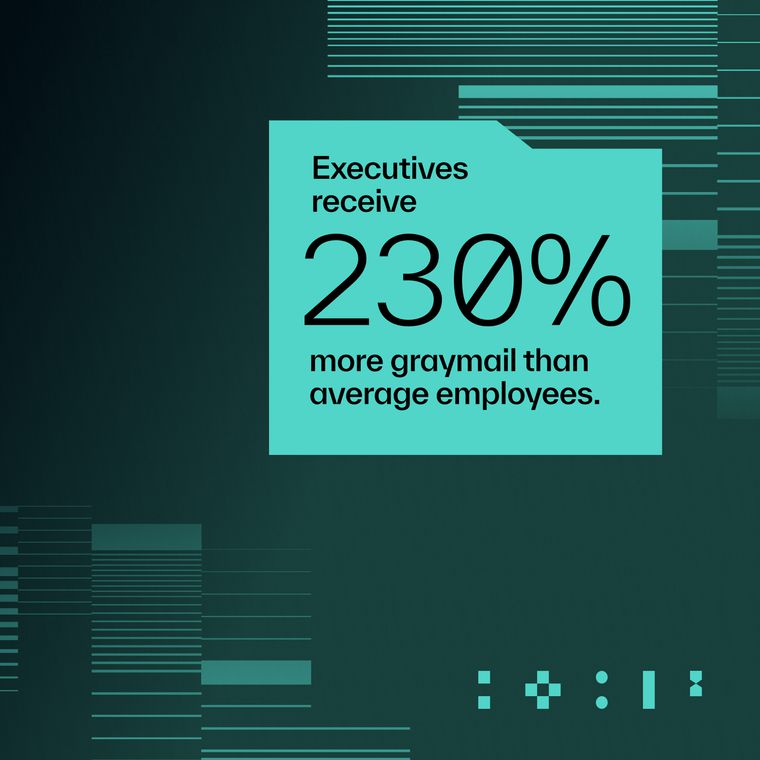Top Tips for Evaluating Behavior-Based Security for Your Organization
Learn how to evaluate behavior based security solutions to improve threat detection across your organization.
August 7, 2025
Behavior-based security solutions identify threats by analyzing deviations from normal user and entity behavior, catching attacks that bypass rule-based systems. Modern threats like zero-day malware, fileless attacks, and business email compromise often appear routine and slip past filters relying on known indicators.
Unlike static defenses, behavioral platforms adapt to evolving attacker tactics, detecting anomalies that signature-based tools miss. As adversaries constantly shift domains, techniques, and language, legacy systems struggle to keep up, leaving organizations vulnerable to data loss, financial fraud, and reputational damage.
With breach costs averaging over $4 million, evaluating advanced solutions is critical. Security leaders need a structured approach to identify platforms that deliver meaningful protection, not just reactive alerts. The seven tips that follow will help you assess key capabilities, ask the right questions, and select a solution built to stop today’s dynamic threats and tomorrow’s unknowns.
1. Understand What Behavior-Based Really Means
Not all behavioral security solutions are created equal. True behavioral platforms create dynamic baselines from normal environmental patterns, then flag deviations in real-time. This differs fundamentally from legacy rule-driven tools that match activity against static signatures. This explains why sophisticated attacks often appear new to traditional engines.
Advanced platforms continuously model every user, device, and vendor interaction, assigning dynamic risk scores rather than waiting for security analysts to write new detection rules. When attackers mimic trusted senders or repackage malware, they cannot hide behind familiar file hashes or IP addresses. Any deviation from established behavioral patterns triggers inspection, scoring, and containment when necessary.
This evolution from static controls to living behavioral baselines represents the most significant advancement in modern threat detection. The distinction determines whether your security infrastructure adapts to emerging threats or perpetually plays catch-up with signature updates.
2. Look for Granular User and Entity Profiling
Effective behavioral analytics creates unique profiles for each individual entity: employees, contractors, service accounts, and SaaS applications all receive distinct baselines. Platforms that group users into broad categories inevitably miss subtle anomalies, like payroll automation accessing finance records outside normal parameters.
Evaluate the breadth of signals feeding each profile. Directory attributes, authentication logs, email telemetry, and HR context should flow seamlessly into the analysis engine. Leading platforms maintain millions of concurrent baselines, dramatically reducing false positives while surfacing impersonation attempts that signature-based systems routinely miss.
During vendor evaluations, probe deeply into profile update frequency, dormant account handling, and peer-group analysis integration. Determine whether platforms maintain truly individual baselines or rely on less precise role-based groupings. Granular modeling creates clearer threat visibility and significantly more accurate risk assessment.
3. Evaluate Detection Across Communication Channels
Modern attackers pivot fluidly between email, Slack, Teams, and SaaS applications within minutes, your defenses must follow users across these environments, not just monitor isolated inboxes. Prioritize API-based ingestion that normalizes events from collaboration platforms, cloud file shares, and identity providers, then correlates them into unified behavioral timelines.
Leading platforms integrate seamlessly with Microsoft 365, Google Workspace, Slack, and Zoom through single-click deployment. This enables sophisticated correlation: phishing links detected in email automatically elevate scrutiny for subsequent authentication attempts or file access requests. Cross-channel visibility exposes multi-stage campaigns like credential theft followed by systematic SaaS data exfiltration.
Press vendors hard on context sharing between channels versus operating isolated detection silos. Only platforms maintaining unified user context across communication vectors can detect sophisticated attack chains that span multiple applications and services.
4. Ask How the System Handles New Behavior
Organizational change happens constantly: executives travel internationally, vendors update banking details, and employees transition roles. Strong behavioral platforms distinguish organic change from malicious anomalies without requiring endless manual tuning or administrative overhead.
Advanced models self-adapt using rolling baselines and statistical confidence intervals rather than brittle static thresholds. Sophisticated systems cross-reference new behavioral signals against comprehensive historical context, a vendor's unexpected wire transfer request triggers additional verification steps, while legitimate workflow migration gets incorporated automatically into baseline models.
During platform evaluation, simulate common organizational change scenarios and carefully observe system responses. Does the platform intelligently auto-classify behavioral changes, or does it force time-consuming manual whitelisting processes? Faster adaptive learning translates directly into reduced administrative burden and more consistent protection coverage.
5. Check for Contextual Awareness
Behavioral anomalies only become actionable intelligence when paired with relevant contextual information: device health status, geographic location, timing patterns, and financial intent all contribute to risk scoring accuracy. Without proper context, statistical outliers become meaningless noise that overwhelms security teams.
Leading platforms layer dozens of contextual signals such as invoice history, vendor relationship duration, privilege access levels, onto each detected anomaly. A midnight login from an unrecognized device in a development sandbox environment might be tolerated, while identical activity targeting payroll systems immediately triggers step-up multi-factor authentication.
Require vendors to demonstrate context integration capabilities, data refresh rates, and analyst drill-down functionality. Rich contextual awareness transforms raw statistical anomalies into precise, actionable threat intelligence while dramatically reducing alert fatigue for security operations teams.
6. Review Response Capabilities
Even perfect threat detection provides little value without rapid, coordinated response capabilities. Organizations remain vulnerable during critical windows between detection and remediation. Prioritize platforms that automatically remediate low-risk threats while streamlining analyst workflows for high-risk security incidents.
Essential response features include bulk malicious content removal, real-time user warning banners, automated credential revocation, and native SOAR platform integration. Advanced behavioral platforms can quarantine malicious communication threads across entire organizations within seconds while providing comprehensive forensics timelines showing initial contact, lateral movement patterns, and user interaction history.
Automated, consistent response capabilities significantly reduce threat dwell time and prevent SOC analyst fatigue by eliminating repetitive manual remediation tasks. Response automation often determines whether detected threats evolve into successful, damaging security breaches.
7. Consider Deployment Time and Maintenance Overhead
Security solutions requiring months-long deployment cycles or constant manual tuning rarely achieve comprehensive organizational coverage. Prioritize cloud-native, API-connected architectures that avoid disruptive MX record changes, endpoint agent installations, or service downtime requirements.
The most effective platforms onboard most enterprise environments within 30 minutes and operate with minimal ongoing maintenance requirements, freeing security teams to focus on strategic initiatives rather than routine system administration. Rapid deployment accelerates return on investment while proving platforms can scale effectively with business growth and evolving requirements.
During evaluation trials, carefully measure data ingestion speed, baseline establishment timeframes, and time-to-first-high-confidence-detection metrics. These performance indicators reveal whether platforms can maintain operational pace with rapidly evolving business requirements and dynamic threat landscapes.
Why Abnormal AI Stands Out in the Behavior-Based Security Space
Abnormal AI consistently excels across all critical evaluation areas for behavior-based email security solutions. Its AI-native detection engine continuously analyzes comprehensive user and entity activity patterns, delivering sophisticated threat detection across email and connected business applications.
Abnormal's distinctive advantage lies in its deep entity profiling capabilities. The platform extends far beyond surface-level user analysis to include detailed behavioral baselines for employees, external vendors, and automated service accounts, minimizing false positive alerts while surfacing genuine anomalies with exceptional precision. This comprehensive approach integrates advanced intent analysis, ensuring security teams receive full contextual information when investigating potential threats.
Platform deployment is remarkably fast and operationally frictionless, averaging just 30 minutes with minimal ongoing administrative overhead. To explore how Abnormal can strengthen your organization's security posture, consider requesting a personalized risk assessment or scheduling a live platform demo.
Related Posts
Get the Latest Email Security Insights
Subscribe to our newsletter to receive updates on the latest attacks and new trends in the email threat landscape.


